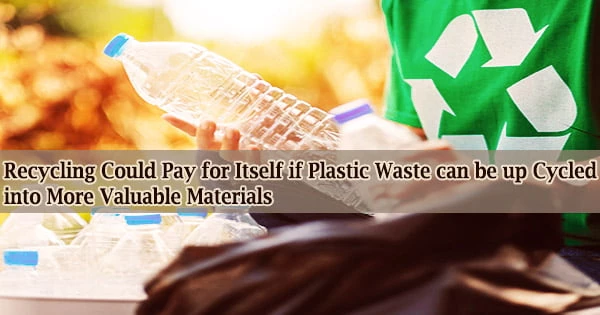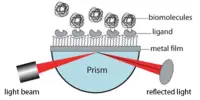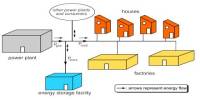A team of researchers at the University of Bath’s Centre for Sustainable and Circular Technologies (CSCT) have devised a new and simple method for upcycling plastic garbage at room temperature. The researchers expect that the new method will make recycling more cost-effective.
In most situations, recycling plastics entails breaking it up and turning it into new goods, most of which are of inferior quality or worth, such as pillow filling. Unfortunately, the vast majority of the plastic you recycle winds up in a landfill.
Plastic garbage currently surpasses all live biomass (4 Giga tonnes) in landfills and the natural environment, posing one of the greatest environmental issues of the twenty-first century.
While recycling rates are rising across Europe, traditional methods are still limited because to the harsh remelting temperatures that degrade the material’s quality each time it is recycled.
The phrase “upcycling” is a relatively new addition to our lexicon. It is an art form in which a discarded object (waste) or a low-value item (plastic bottle) is transformed into something of higher value. Some consider upcycling to be a sort of recycling, and the two terms are frequently used interchangeably, but we believe it is something more.
Polycarbonates, a tough class of plastics extensively used in construction and engineering, now have a mild and rapid chemical recycling process invented by researchers at the CSCT.
They were able to totally break down commercial poly(bisphenol A carbonate) (BPA-PC) beads in 20 minutes at room temperature using a zinc-based catalyst and methanol.
Whilst plastics will play a key role in achieving a low-carbon future, current practices are unsustainable. Moving forward, it’s imperative we source plastics from renewable feedstocks, embed biodegradability/recyclability at the design phase, and diversify existing waste management strategies.
Jack Payne
Upcycling starts with the same goal as recycling: to repurpose an object so that it has a longer lifespan before being disposed as garbage, hence increasing its quality and worth. Recycling also extends the life of an object before it is abandoned as garbage, but the product is of lower quality and worth in the end.
The waste can then be broken down into its chemical components, such as bisphenol A (BPA) and dimethyl carbonate (DMC), which can help to maintain product quality over an infinite number of cycles.
BPA recovery is important because it prevents the release of a potentially harmful environmental contaminant, whereas DMC is a vital green solvent and a building block for other industrial chemicals.
Their findings were reported in ChemSusChem, and they found that their method was more efficient and had softer conditions than earlier methods.
The catalyst is also tolerant to other commercial sources of BPA-PC (e.g. CD) and mixed waste feeds, boosting industrial relevance, and is adaptable to other plastics (e.g. poly(lactic acid) (PLA) and poly(ethylene terephthalate) (PET) at higher temperatures, which is promising.
The team has also proven a fully circular approach to the production of various renewable poly(ester-amide)s (PEAs) using terephthalamide monomers obtained from trash PET bottles. These materials have outstanding thermal characteristics and could be exploited in biomedical applications such as medication delivery and tissue engineering.
Lead researcher Professor Matthew Jones, at the University of Bath’s CSCT, said: “It’s really exciting to see the versatility of our catalysts in producing a wide range of value-added products from plastic waste. It’s crucial we target such products, where possible, to help promote and accelerate the implementation of emerging sustainable technologies through economic incentives.”
Plastics, in various forms, are non-biodegradable and last a long period in the environment. According to a recent UNEP report, by 2050, the oceans will have a 50/50 ratio of plastic to fish. Because of its negative influence on the environment, plastic trash is a major source of concern.
The first author of the paper, Jack Payne from the CSCT, said: “Whilst plastics will play a key role in achieving a low-carbon future, current practices are unsustainable. Moving forward, it’s imperative we source plastics from renewable feedstocks, embed biodegradability/recyclability at the design phase, and diversify existing waste management strategies.”
“Such future innovation should not be limited to emerging materials but encompass established products too. Our method creates new opportunities for polycarbonate recycling under mild conditions, helping to promote a circular economy approach and keep carbon in the loop indefinitely.”
The method has only been shown on a limited scale so far, but the team is now working with collaborators at the University of Bath on catalyst optimization and scaling up the process (300 mL). The Engineering and Physical Sciences Research Council financed the study.
















